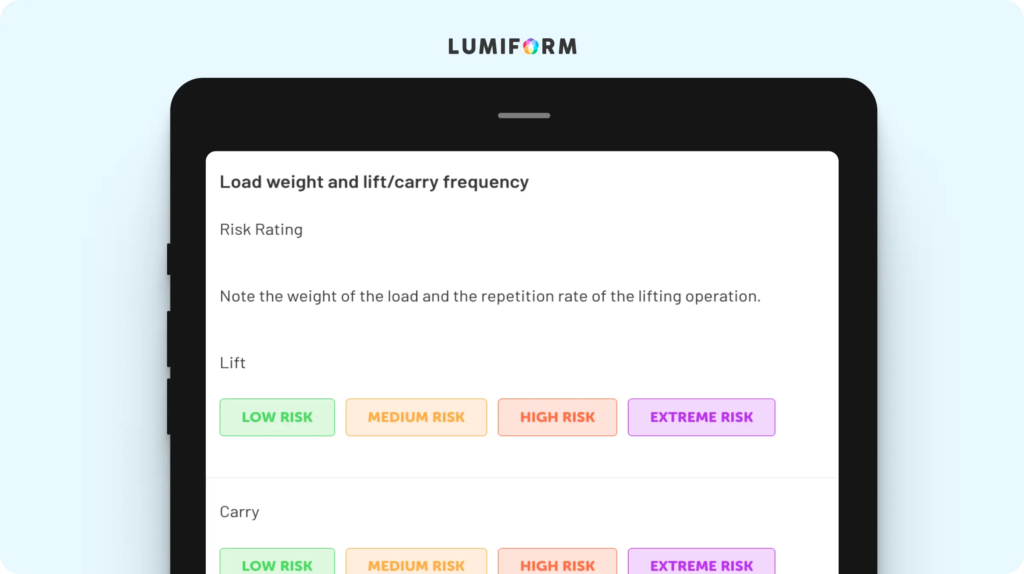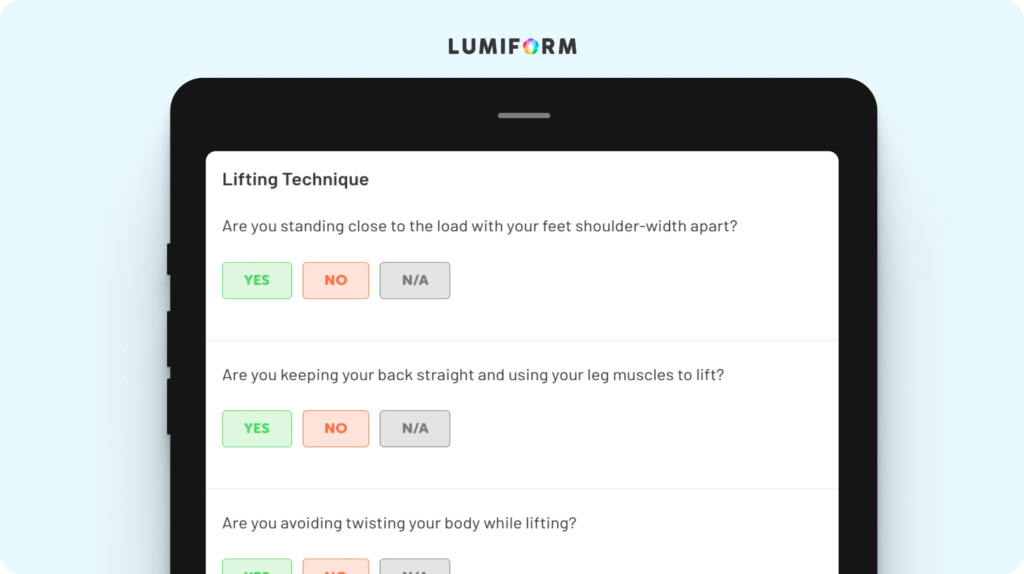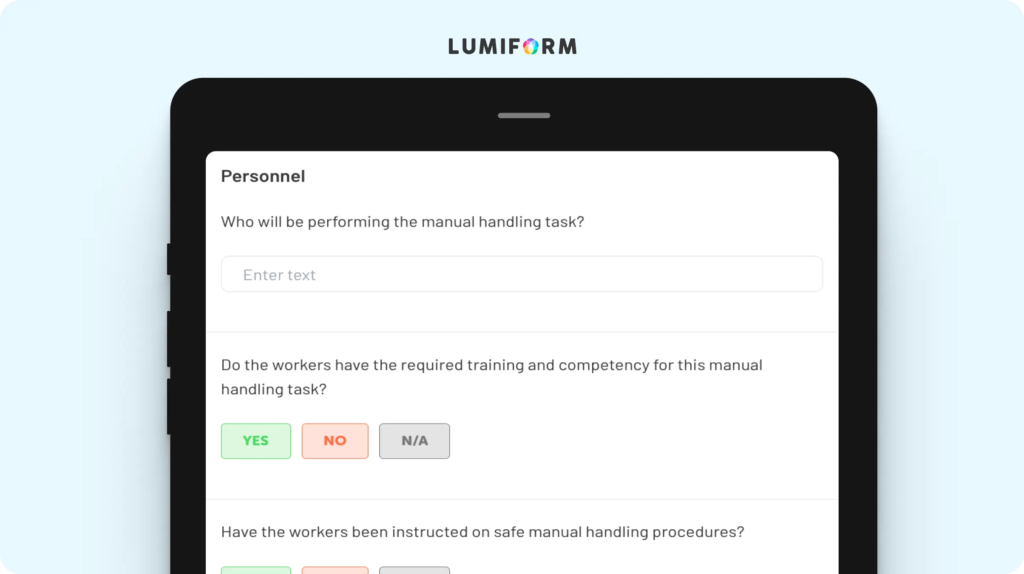Manual handling is a constant part of many industries, yet it remains one of the leading causes of workplace injuries. Improper lifting, carrying, or repetitive movements can result in musculoskeletal disorders, lost productivity, and significant financial costs.
In fact, conducting risk assessments is mandatory in many countries. With these manual handling risk assessment templates, you’ll be able to identify potential hazards, whether it’s inappropriate loads or unsafe handling techniques. Use these to evaluate tasks consistently, implement effective controls, and foster a culture of safety.
Essential manual handling risk assessment templates
The templates below are available as digital forms that you can easily turn into professional reports or as downloadable PDFs:
Manual handling risk assessment template
Efficiently identifying and addressing risks is key to manual handling safety. This template guides you through evaluating tasks such as lifting, pushing, or pulling, ensuring every potential hazard is thoroughly assessed. With features like sections for task descriptions, hazard identification, and control measures, it offers a streamlined yet detailed approach to risk management. You can tailor it by adding company-specific procedures or industry hazards so it aligns with your unique operations. With this template, you can document assessments consistently and improve safety protocols.WorkSafe manual handling checklist
For workplaces looking to comply with WorkSafe standards, this checklist provides a structured method for reviewing manual handling practices. It covers critical areas such as task suitability, environmental factors, and employee ergonomics, ensuring compliance and safety go hand-in-hand. Customizing this checklist is simple—you can include additional checks for high-risk tasks or adapt the criteria to match your operational workflow. Whether you’re conducting regular reviews or addressing specific concerns, this tool ensures your processes stay efficient and employees stay safe.Manual handling equipment checklist
Using the right equipment is essential for minimizing risks in manual handling tasks. This checklist helps you evaluate the condition, suitability, and proper use of tools like trolleys, hoists, and lifts. With clear sections for inspecting equipment functionality and noting required maintenance, it simplifies routine checks. You can adapt it to focus on equipment critical to your industry, ensuring it’s comprehensive and relevant. By adding this checklist to your safety routine, you’ll extend the life of your equipment and enhance workplace safety.Manual handling SWMS template
Safe Work Method Statements (SWMS) are crucial for outlining how manual handling tasks will be performed safely and in compliance with regulations. This template offers a clear framework for documenting task steps, associated risks, and control measures. It’s highly adaptable—perfect for adding specific details about equipment, team responsibilities, or unique site conditions. By using this SWMS template, you’ll create a reliable resource that ensures everyone understands their role in maintaining a safe work environment, while meeting legal requirements.
How to create a manual handling risk assessment template in Lumiform
Creating a tailored manual handling risk assessment template for your team is simple and effective with Lumiform. You can choose any of the templates above, then use the flexible template builder to modify them. Add multiple input fields to capture critical details like task descriptions, identified hazards, and required control measures. Feel free to include photo uploads to visually document risks, helping your team understand issues at a glance.
Once your template is ready, Lumiform’s mobile app ensures it’s accessible to team members anywhere. Your team can conduct assessments on-site, flagging issues directly within the form so you can assign tasks to address these immediately. This real-time collaboration eliminates delays and keeps everyone aligned.
After assessments are completed, Lumiform’s built-in data analysis tools help you track trends and identify recurring risks. You can quickly generate detailed reports to refine processes or provide documentation for compliance audits.




